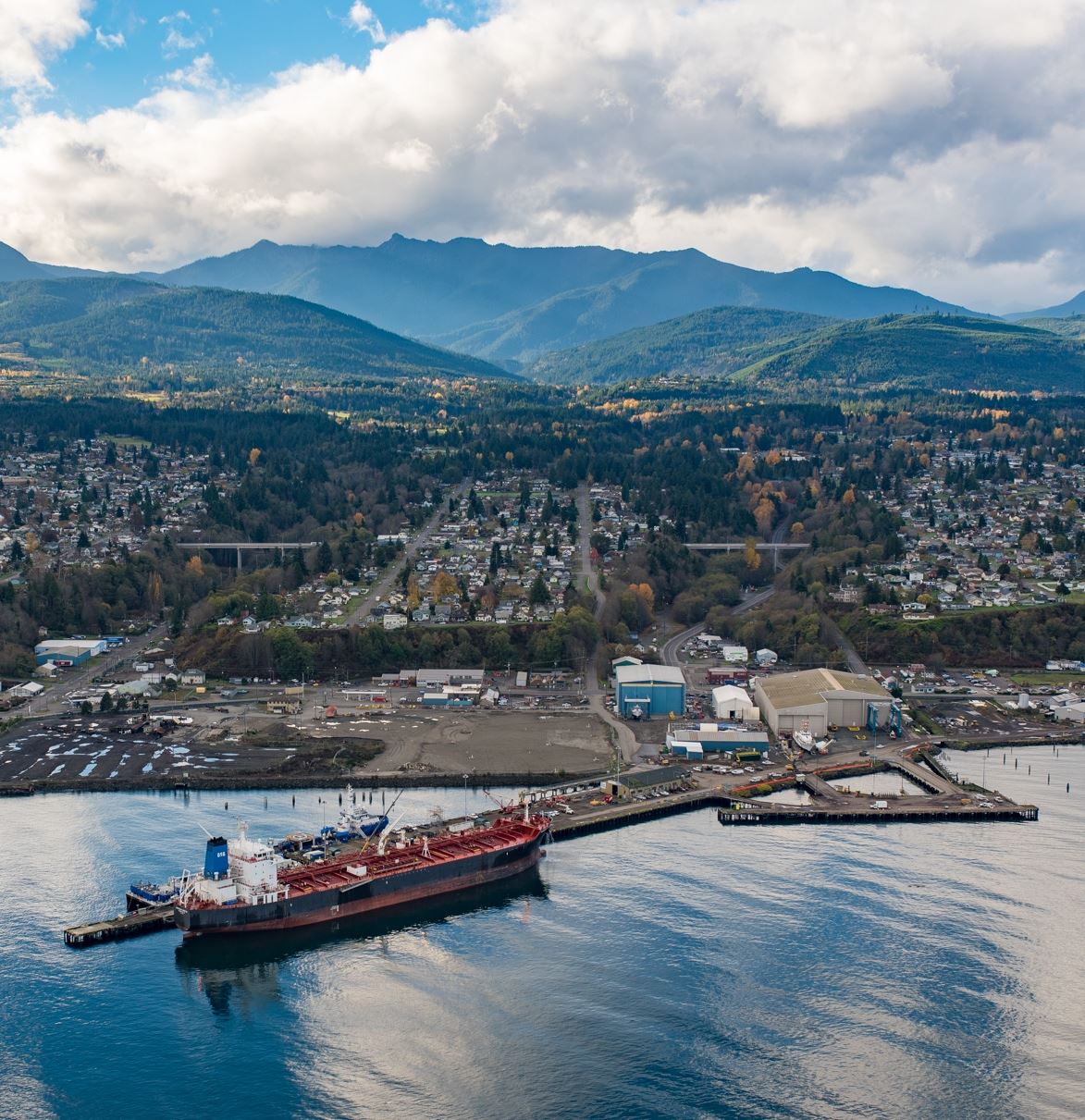MARINE
Terminal Facilities
TERMINAL FACILITIES
MARINE

Terminal 1
T1 provides loading and off-loading of general cargo and can accommodate vessels in need of voyage repair and Critical Area Program inspectors. A skilled workforce is available in Port Angeles to meet any voyage repair needs. Infrastructure at T-1 to facilitate repairs includes:
- Berthing of vessels up to 1,000 feet (366 meters) and 125,000 dead weight tons
- Up to 1800 amps power service
- Tie-up bollards
Length: 1,100 feet with remote dolphins
Height: 17 feet
Water Depth: 36.5 feet m.l.l.w.
Apron: Open
Services: Fresh Water, power (1800 amp, 4890 3-phase), phones, lights, garbage, fuel, lubes, bunkering, stores, cranes, environmental services.
Terminal 2
T2 is leased to the Black Ball Ferry Line that provides vehicle and passenger service to Victoria, British Columbia.
Terminal 2 Rehabilitation & Modernization – East Pier
The Port of Port Angeles, in partnership with Black Ball Ferry Lines, is seeking grant funding through the Port Infrastructure and Development Program (PIDP) FY 2021 for $4.14 Million to rehabilitate the Terminal 2 East Pier for efficient and safe movement of goods.
PIDP (FY 2021) Grant Application Appendices (Links)
Appendix A – The Economic Impacts of Black Ball Ferry Line, November 2019
Appendix B – Port Commitment of Funds & Letter of Commitment from Black Ball
Appendix C – Letters of Support
Terminal 3
T3 is the primary cargo loading terminal, loading forest products for international destinations, and loading ocean log barges shipping to domestic markets. The terminal is supported by a five-acre log yard (read more here). Ship loading and equipment operation are provided by a longshore workforce in ILWU Local 27.
T3 also supports the shipment and discharge of general cargo. It can handle loading from both water and wharf, and it is the Port’s heavy lift pier, accommodating cranes up to 200 tons.
Length: 445 feet with remote dolphins
Height: 17 feet
Water Depth: 45 feet m.l.l.w.
Apron: Open
Services: Fresh Water, power (600 amps, 480v, 3 phase), phones, lights, garbage, fuel, lubes, bunkering, stores, cranes, environmental services.
Storage: Port log yard (log dumping/rafting), surge area, limited covered warehouse storage.
Handling equipment: Three log stackers, three forklifts (capacity to 16,000 lbs.)
Terminal 4
T4 is a small cargo pier and is currently leased to Arrow Marine Services.
Terminal 5
T5 is a cargo pier that is not currently leased.
Terminal 6
T6 is a cargo pier that is not currently leased.
Terminal 7
T7 is a lay berth facility for vessels up to 500 feet in length (228 meters) and has a water depth of 30 feet m.l.l.w.
Security
As the Port of Port Angeles continues to grow, so does its security needs. Prior to the Sept. 11, 2001 terrorist attacks, the Port of Port Angeles operated as an open public terminal. Afterward, the Port received security grant funding to install perimeter security fencing with access control gates, back-up power connection for generators, fiber-optic cable, and a video surveillance system. The Port also increased its terminal security staff to a 24/7 operation.
View or download our Declaration of Security form.
Transportation Worker Identification Credentials (TWICs), or TWIC cards, are required to enter Port of Port Angeles terminals.
